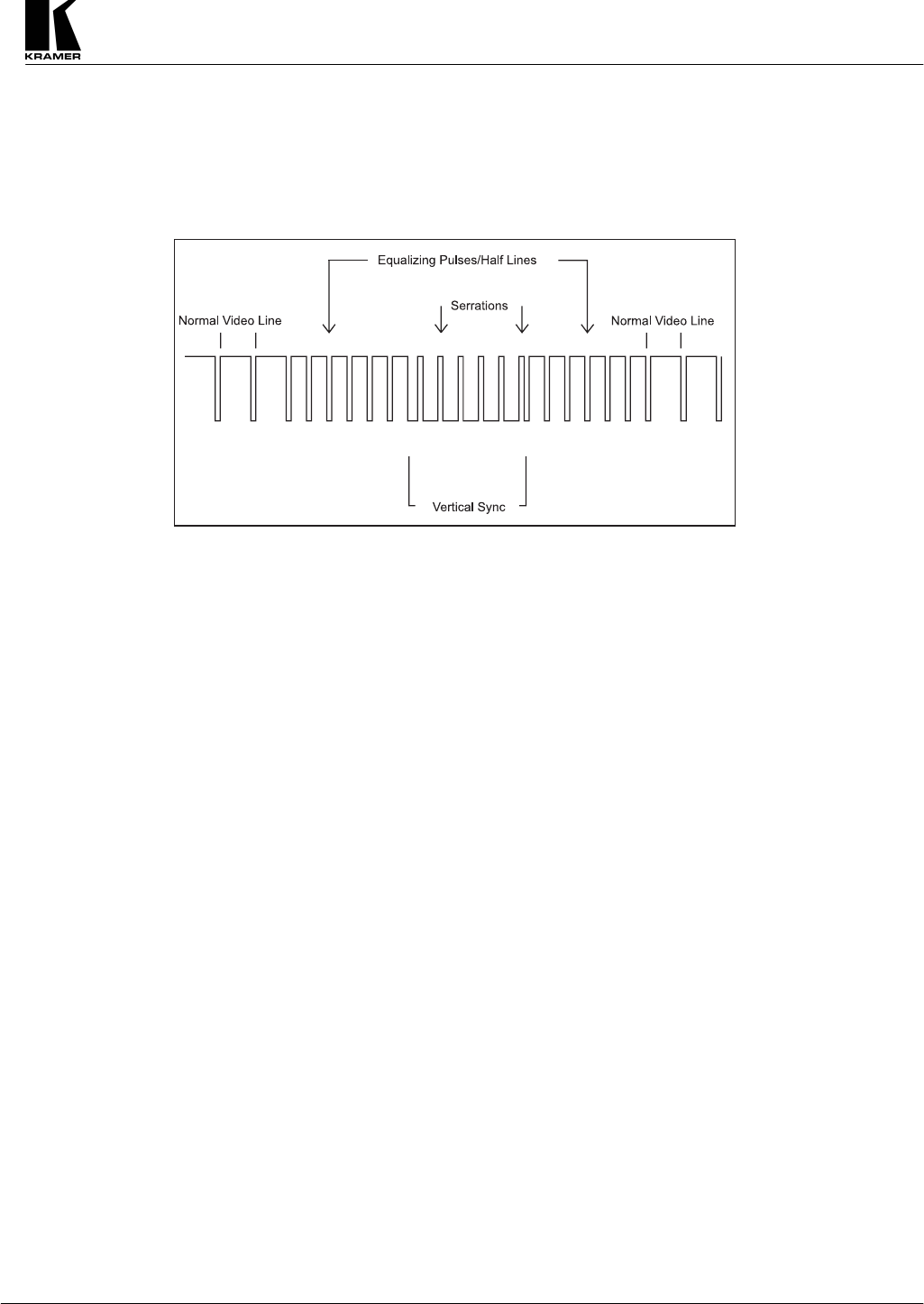
Kramer Electronics Ltd.
2
Vertical sync, often referred to as the field sync (see Figure 2), is also a negatively directed set of pulses,
found at the beginning of each video field (60 field/sec. in NTSC, 50 fields/sec. in PAL). Vertical sync is a
more complicated signal than horizontal sync, which tells the monitor: “be prepared, a new field of data is
coming”. Vertical sync also resides in the blanking area, and is not visible on the screen.
Figure 2: Vertical Sync
1.1.2 Sync location
Sync location varies according to video format, as follows:
In the Composite video signal it is an integral part of the signal as Composite is a “package” including
sync (horizontal and vertical), luminance (Y) and chrominance (color) information.
The s-Video signal format has two parts: luminance (brightness, black & white) and chrominance
(color) information. The sync signals in this format are part of the luminance (Y) signal.
The Component video signal is comprised of three signals – luminance (Y) and two different color
signals, R-Y and B-Y. The sync signals reside in the Y signal.
When it comes to RGB (Red, Green, Blue) signals used in professional computer graphics and display
applications, there are several options for the sync signals to be carried along with the data. The first
and most common one is in a separate analog sync channel. This format uses 4 wires carrying signals
and is called RGBS.
Another popular format uses only three wires – Red and Blue (as in the above configuration) and
Green+Sync, where the sync rides on the green signal. In this format, the signal levels are not
identical as the Green signal has a larger amplitude due to the sync it carries, and the sync signals
must be tripped off in order to recover the normal green sync level.
A subset of this format inserts the sync signals in all three data channels – e.g., Red+Sync, Blue+Sync
and Green+Sync.
The format generated by a computer graphics card is normally made of 5 different signals: Red,
Green, Blue, Horizontal sync and Vertical sync (sometimes referred to as Hs and Vs.) To make things
more complicated, the data channels (R, G, B) are analog channels (their level varies in a continuous
way from 0 to maximum) but the sync signals are digital format signals (TTL level) being either "0"
or "1" (0V or 5V). To make things even more complicated, in contrast to the analog sync signals that
are negatively directed pulses, the computer generated logic-level syncs can appear in both directions.
Sometimes one of the syncs is positive and the other is negative, sometimes both are either positive or
negative. The sync direction is dictated by the source (the graphics card) and is dependent on the
required resolution. In the past, the sync direction instructed the monitor which resolution to choose.
Today, most of the monitors are smarter and set the resolution automatically, but nevertheless, the
cards still generate those sync signals.


















